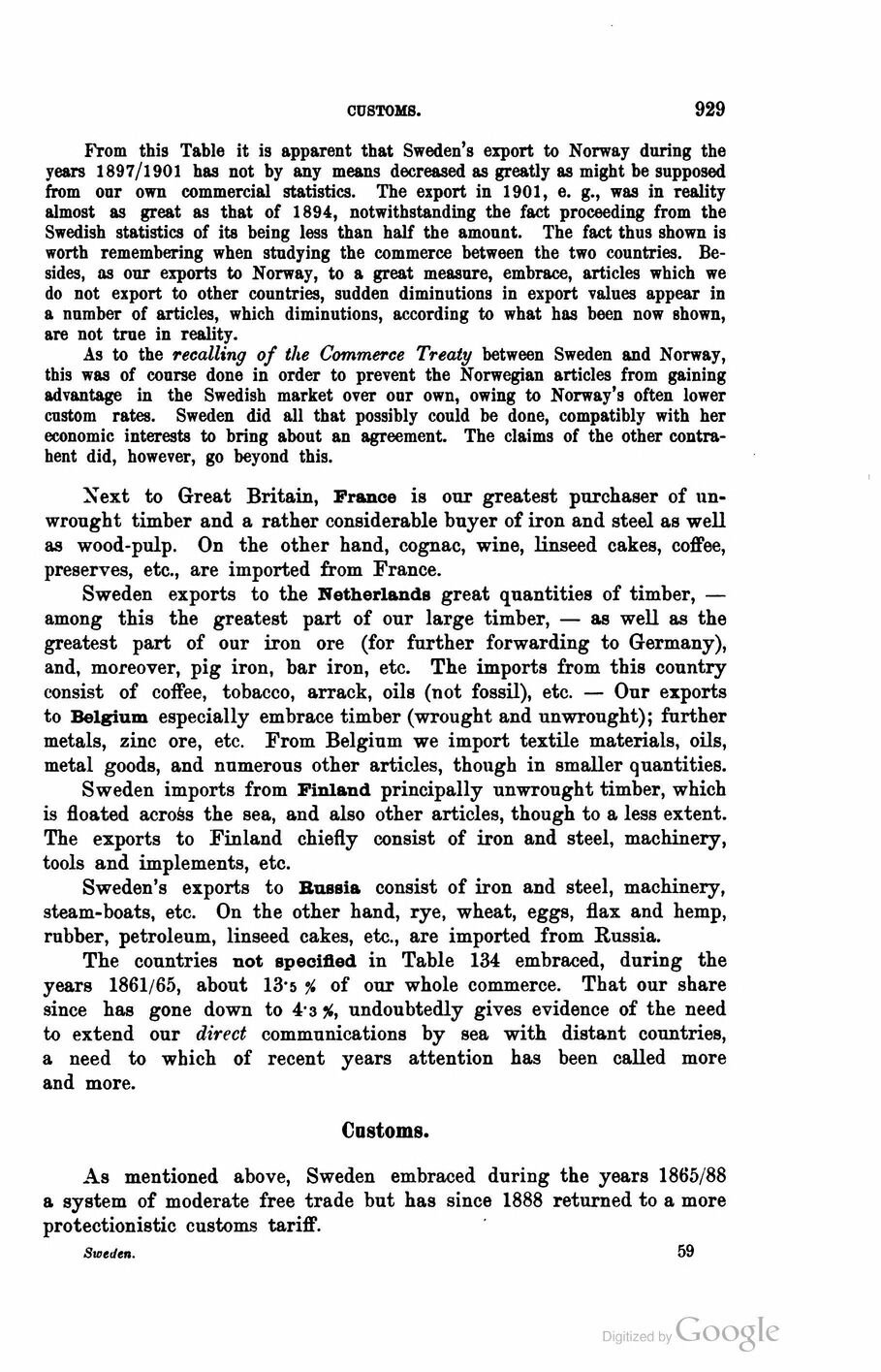
Full resolution (JPEG) - On this page / på denna sida - Second part - XI. Commerce - Foreign Commerce - Sweden's commerce with different countries - Customs

<< prev. page << föreg. sida << >> nästa sida >> next page >>
Below is the raw OCR text
from the above scanned image.
Do you see an error? Proofread the page now!
Här nedan syns maskintolkade texten från faksimilbilden ovan.
Ser du något fel? Korrekturläs sidan nu!
This page has never been proofread. / Denna sida har aldrig korrekturlästs.
CUSTOMS.
929
From this Table it is apparent that Sweden’s export to Norway during the
years 1897/1901 has not by any means decreased as greatly as might be supposed
from our own commercial statistics. The export in 1901, e. g., was in reality
almost as great as that of 1894, notwithstanding the fact proceeding from the
Swedish statistics of its being less than half the amount. The fact thus shown is
worth remembering when studying the commerce between the two countries.
Besides, as our exports to Norway, to a great measure, embrace, articles which we
do not export to other countries, sudden diminutions in export values appear in
a number of articles, which diminutions, according to what has been now shown,
are not true in reality.
As to the recalling of the Commerce Treaty between Sweden and Norway,
this was of course done in order to prevent the Norwegian articles from gaining
advantage in the Swedish market over our own, owing to Norway’s often lower
custom rates. Sweden did all that possibly could be done, compatibly with her
economic interests to bring about an agreement. The claims of the other
contra-hent did, however, go beyond this.
Next to Great Britain, France is onr greatest purchaser of
un-wrought timber and a rather considerable buyer of iron and steel as well
as wood-pulp. On the other hand, cognac, wine, linseed cakes, coffee,
preserves, etc., are imported from France.
Sweden exports to the Netherlands great quantities of timber, —
among this the greatest part of our large timber, — as well as the
greatest part of our iron ore (for further forwarding to Germany),
and, moreover, pig iron, bar iron, etc. The imports from this country
consist of coffee, tobacco, arrack, oils (not fossil), etc. — Our exports
to Belgium especially embrace timber (wrought and unwrought); further
metals, zinc ore, etc. From Belgium we import textile materials, oils,
metal goods, and numerous other articles, though in smaller quantities.
Sweden imports from Finland principally unwrought timber, which
is floated across the sea, and also other articles, though to a less extent.
The exports to Finland chiefly consist of iron and steel, machinery,
tools and implements, etc.
Sweden’s exports to Russia consist of iron and steel, machinery,
steam-boats, etc. On the other hand, rye, wheat, eggs, flax and hemp,
rubber, petroleum, linseed cakes, etc., are imported from Russia.
The countries not specified in Table 134 embraced, during the
years 1861/65, about 13-5 % of our whole commerce. That our share
since has gone down to 4-3 undoubtedly gives evidence of the need
to extend our direct communications by sea with distant countries,
a need to which of recent years attention has been called more
and more.
C a atoms.
As mentioned above, Sweden embraced during the years 1865/88
a system of moderate free trade but has since 1888 returned to a more
protectionistic customs tariff.
Sweden. 59
<< prev. page << föreg. sida << >> nästa sida >> next page >>